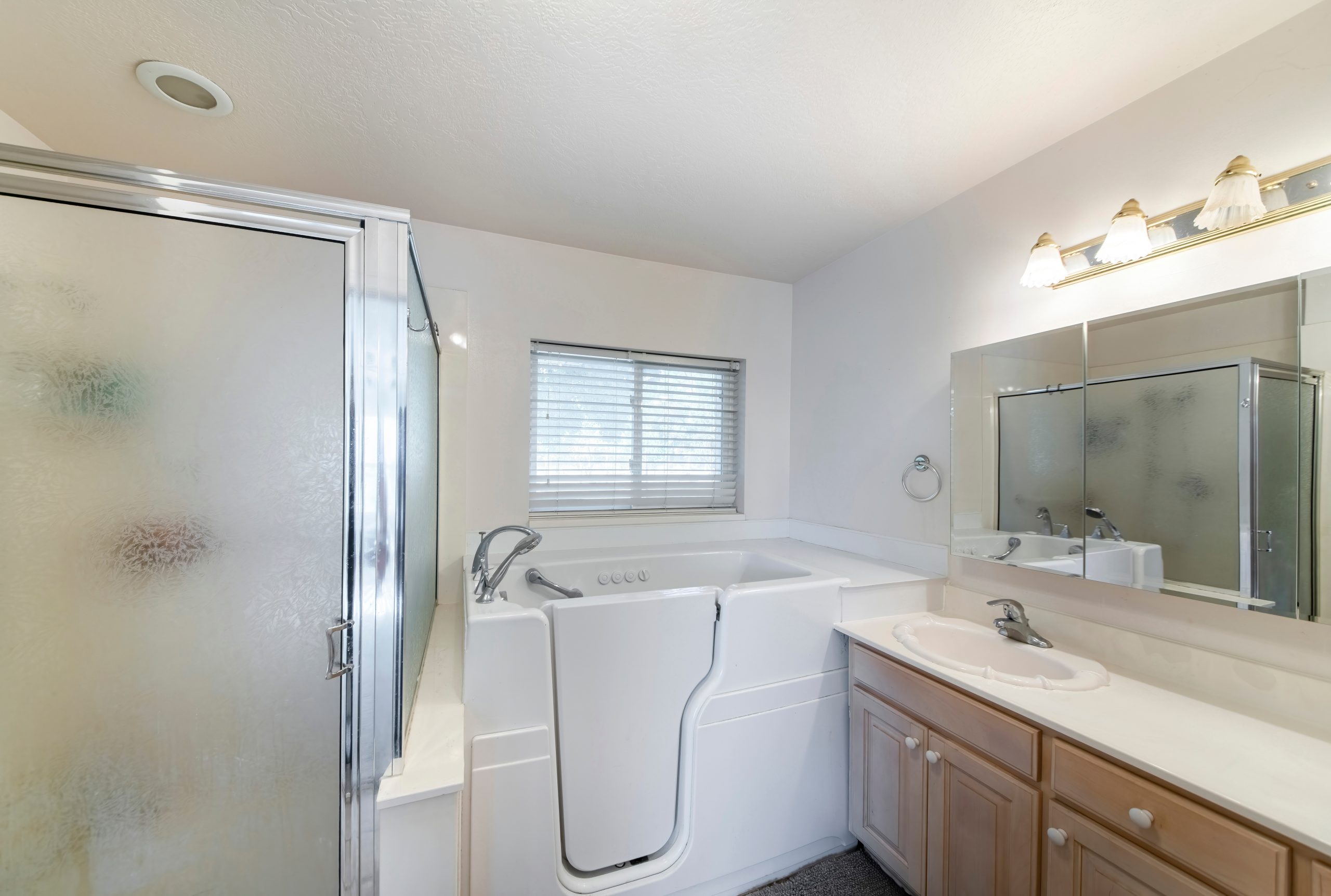Getting older doesn’t mean you have to give up relaxing baths. But for many seniors, traditional bathtubs can feel more like an accident waiting to happen. That’s where walk-in tubs come in. They offer safety, comfort, and independence—but they can also come with a hefty price tag.

The good news? There are affordable walk-in tub options that won’t break the bank. Here’s what to look for, how much you can expect to spend, and how to get the most value for your money.
What Is a Walk-In Tub?
A walk-in tub is a specially designed bathtub with a door that opens, allowing users to step in easily without climbing over a high ledge. These tubs often include features like:
Built-in seating
Grab bars
Non-slip floors
Hand-held shower wands
Quick drain systems
Hydrotherapy or air jets (in premium models)
They’re ideal for people with mobility issues, arthritis, joint pain, or those recovering from surgery.
How Much Do Walk-In Tubs Cost?
Walk-in tubs vary widely in price depending on features, size, and installation complexity. Here’s a general price range:
| Tub Type | Estimated Price Range | Includes Installation? |
|---|---|---|
| Basic Soaker | $2,000 – $5,000 | Usually not |
| Hydrotherapy (Water Jets) | $4,000 – $7,000 | Sometimes |
| Air Jet Systems | $4,000 – $9,000 | Sometimes |
| Combo Tubs (Air + Water) | $6,000 – $12,000+ | Often included |
Installation can add anywhere from $1,000 to $3,000 depending on plumbing, electrical, and bathroom modifications.
Affordable Walk-In Tub Brands to Consider
Looking to save without sacrificing safety? These brands offer good value for their price point and are highly rated by consumers:
| Brand | Best For | Starting Price | Notable Features |
|---|---|---|---|
| American Standard | All-around reliability | $4,000 | Easy-touch controls, optional massage jets |
| Safe Step | Premium features at a deal | $5,500 | Aromatherapy, fast-drain system, wheelchair access |
| Ella’s Bubbles | Compact models | $3,500 | Dual drain, stainless steel frame, luxury feel |
| Kohler | Trusted name, sleek design | $6,000 | Hydrotherapy, fast fill and drain, high-end finish |
| Meditub | Budget-conscious buyers | $2,500 | Basic soakers with optional upgrades |
Most brands also offer financing, so you don’t have to pay the full amount upfront.
What Makes a Walk-In Tub “Affordable”?
It’s not just about the price tag. An affordable walk-in tub also offers long-term value. Here’s how to spot one:
1. Durable Materials
Look for tubs made from acrylic or gelcoat. They last longer and are easier to clean.
2. Simple Install
If your bathroom doesn’t need major changes, installation costs will be lower.
3. Warranty Coverage
A solid warranty (at least 5–10 years) protects your investment.
4. Essential Features Only
Skip the bells and whistles. Soaking tubs with safety features cost less and still get the job done.
Financing Options for Seniors
Buying a walk-in tub is a big investment, but there are ways to make it easier on your wallet:
Medicare
Unfortunately, Medicare usually doesn’t cover walk-in tubs, even if prescribed. However, it’s worth checking if your Medicare Advantage plan offers any home safety benefits.
Medicaid
In some states, Medicaid may help cover the cost if the tub is deemed medically necessary. You’ll need a doctor’s note and to meet eligibility requirements.
Veterans Benefits
If you’re a veteran, you might qualify for funding through VA programs like the Home Improvements and Structural Alterations (HISA) grant.
Financing Plans
Most companies offer payment plans or low-interest financing. Be sure to read the fine print to avoid high fees or balloon payments.
DIY vs. Professional Installation
Trying to save money by doing it yourself? Here’s what to consider:
| Installation Option | Pros | Cons |
|---|---|---|
| DIY Installation | Save $1,000+ | Risk of leaks, code violations |
| Professional Install | Done quickly and correctly | Higher cost |
If plumbing or electrical work is needed (which it often is), hiring a pro is usually the smarter—and safer—move.
Tips for Getting the Best Deal
Ask About Discounts: Some companies offer senior, military, or seasonal discounts.
Compare Quotes: Get at least three estimates before buying.
Check Reviews: Look at third-party sites like Trustpilot or the Better Business Bureau.
Avoid Pushy Sales Tactics: Walk away if a salesperson pressures you into signing on the spot.
Look for Local Dealers: You might save on shipping and installation by buying locally.
Alternatives to Walk-In Tubs
Not ready to drop thousands on a tub? Consider these lower-cost options:
| Product | Cost | Pros | Cons |
|---|---|---|---|
| Transfer Benches | $40 – $150 | Simple to use, no remodel needed | No full soaking experience |
| Bathtub Safety Rails | $20 – $60 | Easy to install, helps with stability | No extra safety features |
| Handheld Shower Heads | $25 – $75 | Better control, can sit while bathing | Doesn’t solve mobility issues |
| Bath Lifts | $300 – $800 | Lifts you in/out of tub, fits regular bathtubs | Can be bulky, requires power |
These aren’t permanent solutions, but they can help in the short term or when you’re on a tight budget.
Final Word: Soaking Comfort Without Drowning Your Budget
A walk-in tub can add years of safe, independent living for seniors—but it doesn’t have to cost a fortune. With smart shopping, the right financing, and a focus on essential features, you can find an affordable option that fits your needs and your budget.
If you’ve been avoiding baths because of mobility concerns, now’s the time to explore your options. Whether it’s a simple soaker or a full hydrotherapy system, there’s a solution out there that brings comfort, safety, and peace of mind.










